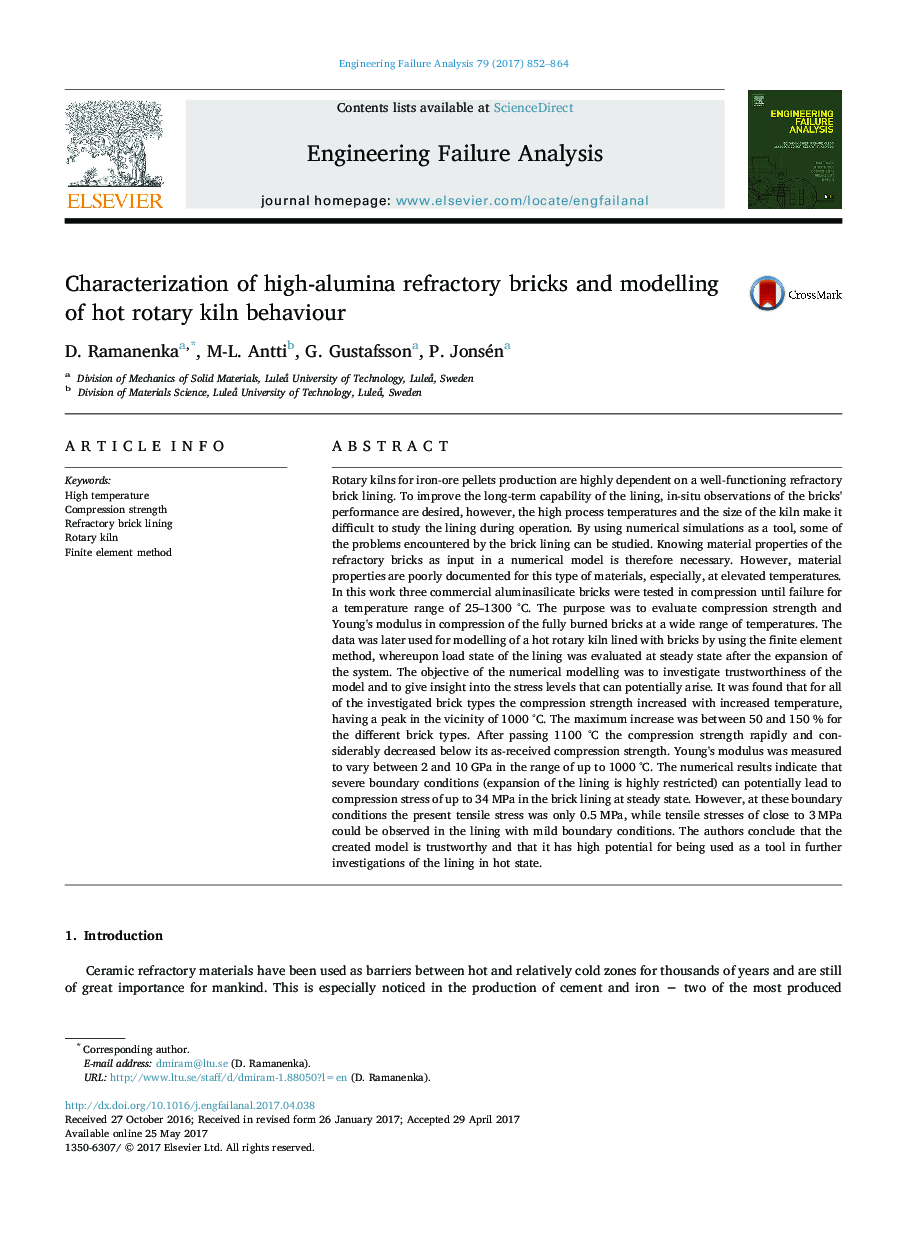| Article ID | Journal | Published Year | Pages | File Type |
|---|---|---|---|---|
| 5013599 | Engineering Failure Analysis | 2017 | 13 Pages |
Abstract
Rotary kilns for iron-ore pellets production are highly dependent on a well-functioning refractory brick lining. To improve the long-term capability of the lining, in-situ observations of the bricks' performance are desired, however, the high process temperatures and the size of the kiln make it difficult to study the lining during operation. By using numerical simulations as a tool, some of the problems encountered by the brick lining can be studied. Knowing material properties of the refractory bricks as input in a numerical model is therefore necessary. However, material properties are poorly documented for this type of materials, especially, at elevated temperatures. In this work three commercial aluminasilicate bricks were tested in compression until failure for a temperature range of 25-1300 °C. The purpose was to evaluate compression strength and Young's modulus in compression of the fully burned bricks at a wide range of temperatures. The data was later used for modelling of a hot rotary kiln lined with bricks by using the finite element method, whereupon load state of the lining was evaluated at steady state after the expansion of the system. The objective of the numerical modelling was to investigate trustworthiness of the model and to give insight into the stress levels that can potentially arise. It was found that for all of the investigated brick types the compression strength increased with increased temperature, having a peak in the vicinity of 1000 °C. The maximum increase was between 50 and 150 % for the different brick types. After passing 1100 °C the compression strength rapidly and considerably decreased below its as-received compression strength. Young's modulus was measured to vary between 2 and 10 GPa in the range of up to 1000 °C. The numerical results indicate that severe boundary conditions (expansion of the lining is highly restricted) can potentially lead to compression stress of up to 34 MPa in the brick lining at steady state. However, at these boundary conditions the present tensile stress was only 0.5 MPa, while tensile stresses of close to 3 MPa could be observed in the lining with mild boundary conditions. The authors conclude that the created model is trustworthy and that it has high potential for being used as a tool in further investigations of the lining in hot state.
Related Topics
Physical Sciences and Engineering
Engineering
Industrial and Manufacturing Engineering
Authors
D. Ramanenka, M-L. Antti, G. Gustafsson, P. Jonsén,
